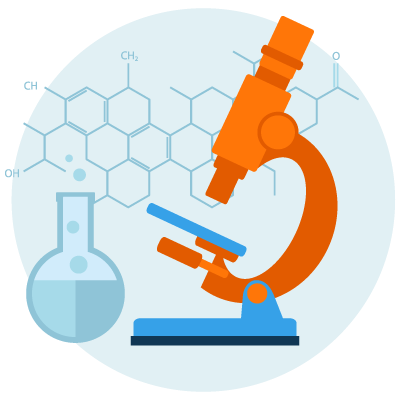In nature, in addition to the 20 amino acids used for making proteins, there are hundreds of plant-derived amino acids, called non-protein amino acids (npAAs). These npAAs are produced to protect plants from being attacked by insects or to block the growth of competing plants. Azetidine-2-carboxylic acid (Aze) is one such npAA that is present in various beets. These plants are used to produce sugar and for feeding beef and dairy cattle.
Due to its structural similarities with the amino acid, proline, Aze from the diet can be mistakenly substituted for proline during the assembly of proteins. This can cause structural changes to several core proteins required to produce components of the insulating coating of nerves cells, known as myelin. It is possible that such changes could induce the immune system to mistakenly attack the myelin.
In this project, samples of brain tissue from people with MS and people without MS obtained from the MS Australia Brain Bank and the Victorian Brain Bank will be used to assess if Aze is mistakenly added into myelin, and whether there are differences in the amount of Aze mistakenly added in different MS subtypes.
Associate Professor Alessandro Castorina has made significant progress in his project investigating a Aze and its potential link to MS. He has improved a method to detect Aze in brain tissues, showing a five-fold increase in accuracy during early cell studies. More tests using laboratory models are needed before examining human samples, but initial findings are promising.
His work has also created a detailed set of data about genes in the brains of people with MS. This information opens doors for deeper studies using advanced tools to understand how genes are involved in the disease.
A particularly hopeful discovery is that a simple compound called L-proline seems to protect against Aze harm, even at low amounts. This finding suggests that adding more L-proline in the diet could potentially reduce Aze’s negative effects, especially in places where people consume a lot of sugar beets, a source of Aze.
Overall, this update marks an important step forward in uncovering how Aze might be connected to MS. These new findings offer promising possibilities for understanding and maybe even treating this complex disease in the future.
Piper, J. A., Jansen, M. I., Thomas Broome, S., Rodgers, K. J., Musumeci, G., & Castorina, A. (2022). Pro-Inflammatory and Pro-Apoptotic Effects of the Non-Protein Amino Acid L-Azetidine-2-Carboxylic Acid in BV2 Microglial Cells. Current issues in molecular biology, 44(10), 4500–4516. https://doi.org/10.3390/cimb44100308.
$10,000
2021
1 year
Current project




